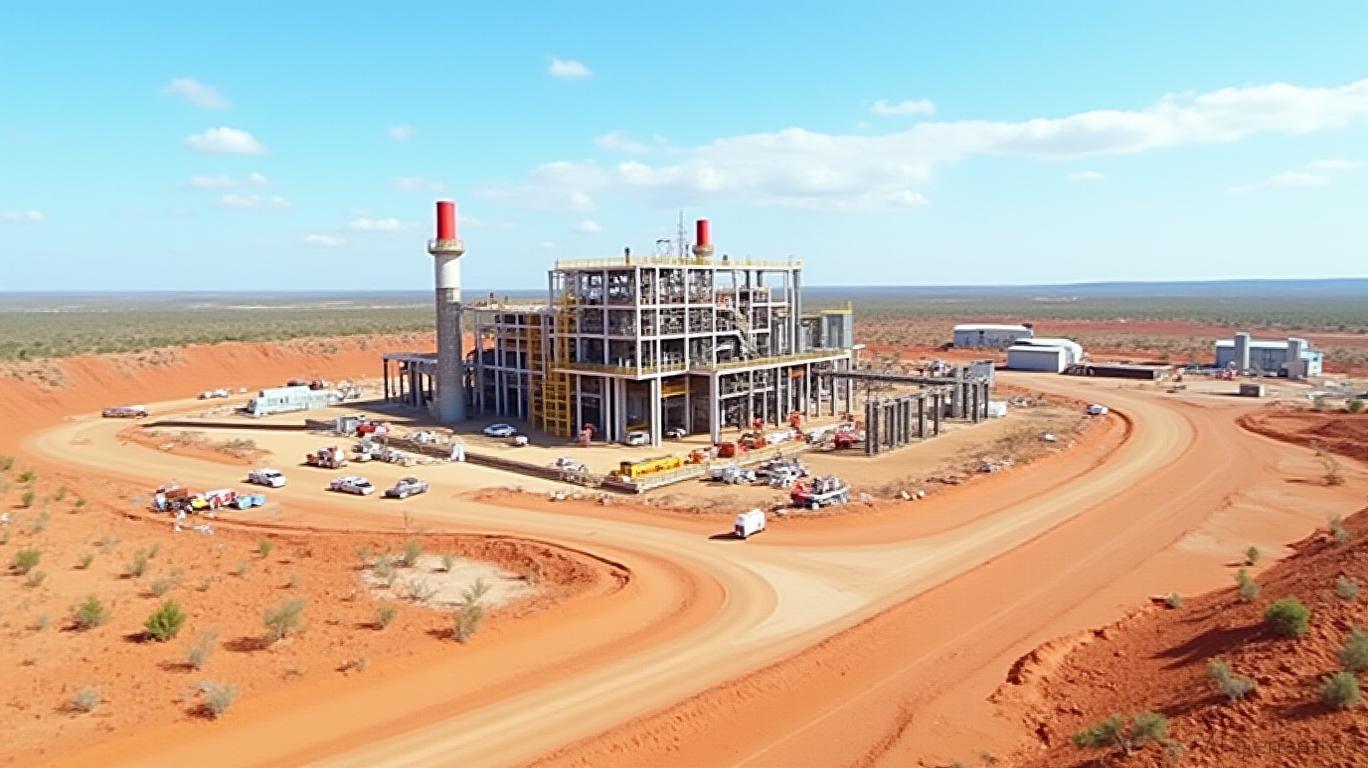Glencore's $22B Asset Shift: A Catalyst for Mining Sector Consolidation and Value Uprising
The mining sector is on the
of a seismic shift, and Glencore's bold $22 billion restructuring of its Australian operations is the tectonic plate that could trigger a chain reaction. By consolidating its global coal, copper, and critical minerals assets into its Glencore Investment Pty Ltd subsidiary, the Swiss commodities giant has positioned itself as the sector's consolidation kingpin. This move isn't just about cost-cutting—it's a strategic masterstroke to unlock undervalued assets, attract merger partners, and capitalize on Asia's insatiable demand for raw materials. Here's why investors should take notice now.
The Merger-Ready Platform: Why Glencore's Structure Attracts Rio Tinto
Glencore's Australian subsidiary now holds $42 billion in assets, including coal mines from Canada and Colombia, South African manganese projects, and cobalt operations tied to the DRC. This consolidation creates a streamlined, merger-ready entity. For rivals like Rio Tinto—a long-rumored merger partner—the appeal is clear:
- Synergy Potential: Combining Glencore's coal assets with Rio's iron ore and copper could create a $100 billion+ mining titan.
- Geopolitical Clout: A joint Australian base would amplify influence in Asia, where China and India account for 60% of global coal imports.
- Valuation Upside: Analysts estimate Glencore's coal assets are undervalued by 30% due to market skepticism over fossil fuels. A merger could re-rate them as strategic “bridge” assets to renewables-era minerals.
Note: Glencore's underperformance relative to the FTSE 100 signals undervalued equity ripe for a catalyst-driven rebound.
Cobalt's Role in Elevating Valuations
While coal gets headlines, Glencore's cobalt play is its secret weapon. Its 50% stake in the Kwinana Cobalt Refinery—set to begin production in 2027—secures a foothold in the EV battery supply chain. The refinery's advanced hydrometallurgical processes (99.8% purity outputs) will compete directly with Chinese rivals, leveraging Australia's ESG-friendly regulatory environment.
The DRC's export ban on unprocessed cobalt—driving prices up 50%—has crystallized Glencore's advantage. Its vertically integrated cobalt supply chain (mining → refining → trading) is a rarity in an industry dominated by fragmented players. This control over 15% of global cobalt supply positions Glencore to stabilize prices and profit from EV demand's exponential growth (forecast to hit 15 million units annually by 2030).
Why Fossil Fuels Still Matter (And Investors Should Care)
Critics dismiss coal as a relic, but Glencore's Australian pivot reveals a smarter play:
1. Asian Market Access: Australia's proximity to Asia's coal-hungry economies (e.g., India's 10% annual coal demand growth) reduces logistics costs and geopolitical risks.
2. Carbon Offset Credibility: By pairing coal operations with cobalt and copper (critical for renewables infrastructure), Glencore paints itself as a “transition fuel” enabler, not a laggard.
3. Debt Reduction: Consolidating assets into higher-margin operations (e.g., cobalt's $16/lb price vs. coal's $100/ton) can slash leverage ratios, making the company more merger-attractive.
The Teck Bid: A Dress Rehearsal for Bigger Deals
Glencore's unsolicited $23 billion bid for Teck Resources isn't just about Canadian coal—it's a trial run for sector consolidation. By splitting into MetalsCo (copper/zinc) and CoalCo, Glencore could spin off coal assets to appease ESG critics while doubling down on critical minerals. The Teck deal's success would validate its ability to negotiate complex mergers, paving the way for Rio Tinto talks.
The Bottom Line: Buy Now, Before the Surge
Glencore's stock trades at 0.4x book value—a discount to peers like BHP (0.8x) and Rio Tinto (0.6x)—despite its asset-rich profile. The catalysts are clear:
- M&A Activity: A Rio Tinto deal could unlock 20%+ upside.
- Cobalt Refinery Launch: Kwinana's 2027 startup will solidify Glencore's EV supply chain role.
- DRC Policy Shifts: Even a partial easing of export bans could reduce cobalt volatility and boost pricing power.
Investors ignoring this opportunity risk missing a once-in-a-decade revaluation event. Glencore isn't just a mining play—it's the consolidator that will reshape the industry. Act now before the merger wave hits.
Disclosure: This article is for informational purposes only. Consult your financial advisor before making investment decisions.

Comments
No comments yet